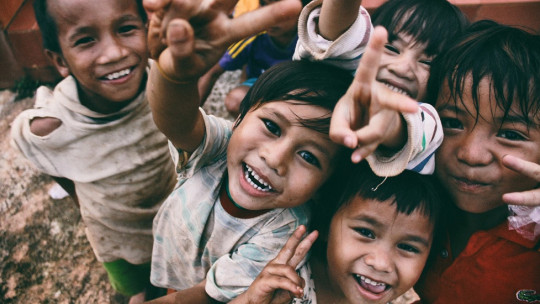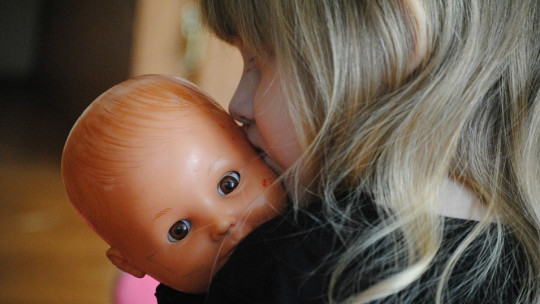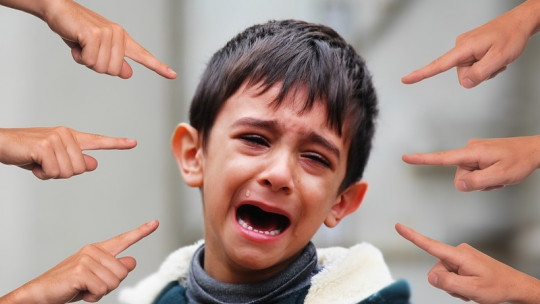
It is no secret that men and women are educated differently. Even having gone to the same school, being in the same family or watching the same media, people learn that we must behave in one way or another based on the gender we were assigned at birth.
Through different socializing agents we attribute different characteristics and roles to men and women, phenomenon known as differential socialization, which is the main promoter of gender inequality even in a subtle and invisible way.
Below we are going to talk in more depth about this phenomenon, not only to learn what it is but also to understand that to combat injustices we must first be aware of the differential treatment we show depending on whether the person in front of us is a man or a woman. women.
What is differential socialization?
People internalize attitudes, values, expectations and behaviors characteristic of the society in which we live. Thanks to this process of acquiring important patterns for society, we become individuals who learn to function. Depending on whether or not he follows socially accepted guidelines, the individual will be rewarded or penalized depending on his behavior.
One of the phenomena that shape our society is differential socialization, which causes people to acquire different identities based on the idea of gender in their culture. Differential socialization involves cognitive, behavioral and attitudinal styles, as well as different moral codes depending on the gender of the individual This process leads to the creation of stereotypical norms assigned to each person’s behavior in reference to their gender.
It is a long learning process, started at birth and extended throughout life through interaction with other people. The individual assimilates visions based on how he should behave based on the gender assigned to him at birth.
This differential socialization is what teaches men that the idea of masculinity is public life, aggressiveness, activity and reasoning, while for women the idea of femininity is private life, tranquility, passivity and sentimentality.
Differential socialization draws heavily on sexual typing This typification would be the process by which the individual acquires sexually typified behavior patterns; it constitutes a broad system of customs that begins from birth, such as, for example, guiding through pink and blue colors, language, body adornments such as earrings, story books, games, songs…

Promoting agents of differential socialization
Although practically any social agent contributes to the differential socialization between men and women, we can highlight the following three as the main ones:
1. Family
The family is, naturally, the first socializing agent and the one that exerts the most influence on the individual Through it, cultural patterns, feelings, attitudes and values are acquired. Since family influences occur first, they are the most persistent.
Although family models have been changing and evolving throughout history, the idea of the traditional or nuclear family continues to constitute a model of production and reproduction. This type of family fulfills a biological function, reproductive, a social function, socialization, and an emotional function, emotional support. The father is conceived as the one who brings the money into the home and the mother as the one who provides emotional support.
Parents are mainly responsible for directly and differentially reinforcing the sexually typified behaviors of their sons or daughters. Imitation of the behaviors of other people within the family It constitutes a powerful vehicle for acquiring gender roles in the family (e.g., grandparents, uncles, older brothers, family friends…).
2. Education and recreational leisure
The traditional educational system was initially designed with male students in mind. In fact, in its beginnings, education in the West was a privilege reserved for men, something that still happens in countries that are backward in terms of gender equality. Although women have been allowed to access education, The educational system at practically all levels continues to draw on an androcentric vision, even in mixed environments
In education today, man is still taken as the measure of all things. Added to this, there is what has been called “the hidden curriculum”, made up of preconceived opinions or prejudices and stereotypes that contain a series of beliefs about what social relations between the sexes are or should be like and what is understood by the model of femininity. and model of masculinity.
The representation of female figures and male figures is not equal in education. Girls have been educated mostly with content, texts and images in which women are rarely present, so they do not have female models or references in which to see themselves reflected.
The games that girls are taught scare them from taking positions of leadership, influence and competitiveness. Feminine games are oriented towards care and taking on a role associated with the home, such as kitchen games, dolls or rope. Instead, Children’s games reward competitiveness, strength and aggressiveness, aimed at helping them stand out and climb positions in the hierarchy
The schoolyards themselves promote differential socialization in a subtle way. Men’s games, such as soccer or basketball, have a privileged space in the playground, with large fields located in the middle of it, occupying a significant percentage of the total recess area.
On the other hand, the most feminine games have to be played on the periphery or in more remote places. In many cases, girls spend recess sitting on benches talking, unable to occupy any more space in the yard
3. Media
It is inevitable to talk about differential socialization without mentioning the media, who have become one of the most important socializing agents. Television and, more recently, social networks are media that transmit values, ideals and role models for men and women. They may include sexist content or stereotypes linked to hierarchy and social distinction
Although the media has tried to expose the news from a gender perspective, there is still a long way to go and there are many times when the public figures of men are exalted while women are left anonymous.
A classic of this are the headlines of many news stories in which, if the protagonist is a man, his name and surname are mentioned, while if it is a woman, the headline usually takes the formula of “A girl/woman of” .
Social media users, sensitive to the invisibility of women, often ironize this type of news by answering in the comments with the formula “name: girl; surname: of”. Women’s names, when they are a source of news, appear less than those of men.
What are the consequences of differential socialization?
Differential socialization is a phenomenon that, as one would expect, makes societies not equal and fair If we want to combat gender inequality, along with racial, sexual, ethnic and other forms of discrimination, what must be changed is the culture and being aware that there are prejudices, stereotypes and subtle ways of treating people differently. different is a good step for it.
It has been observed that differential socialization is a highly variable phenomenon depending on several parameters, even within the same society. The lower the educational level, the more stereotyped the gender roles are. Women are pushed to do household chores, while men are encouraged to be the ones who bring money home Naturally, the assignments of tasks and roles between men and women are very different depending on gender.
Although it is true that it has been found that a higher level of education leads to more egalitarian attitudes between men and women, it does not mean that the more education one has, one reaches a point where there is no inequality. No matter how many studies there are, it is inevitable that women and men are seen in one way or another, attributing certain roles based on their gender.
At least in the West, social differentiation is weaker the younger you are. Youth approve less of gender differentiation, something associated with being part of a generation that is more sensitive to inequalities between men and women since certain traditional stereotypes about how people should behave based on whether they are men or women have been broken
It should be said, however, that economic crises or the current health crisis cause these attitudes contrary to differentiation to devolve.








